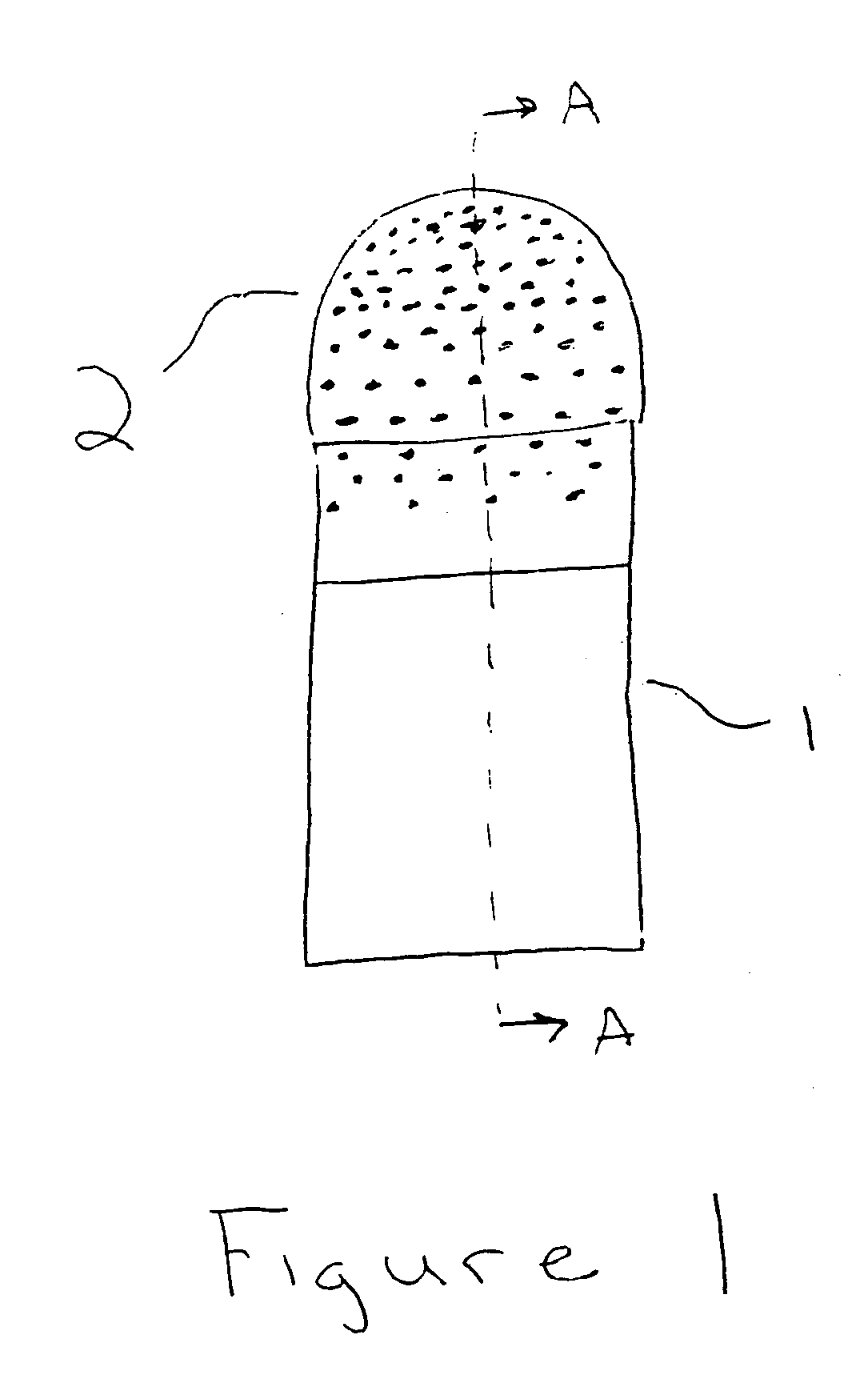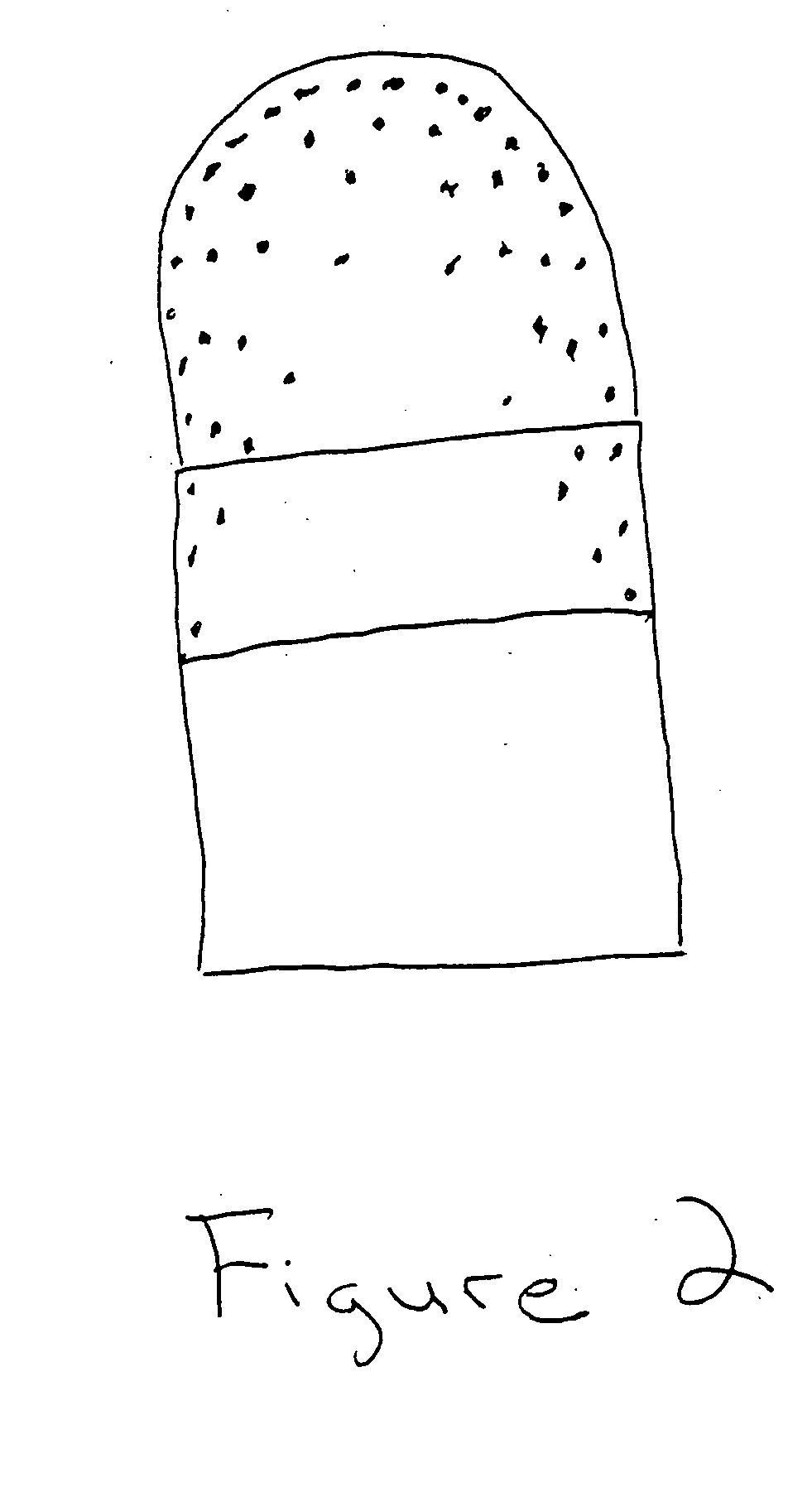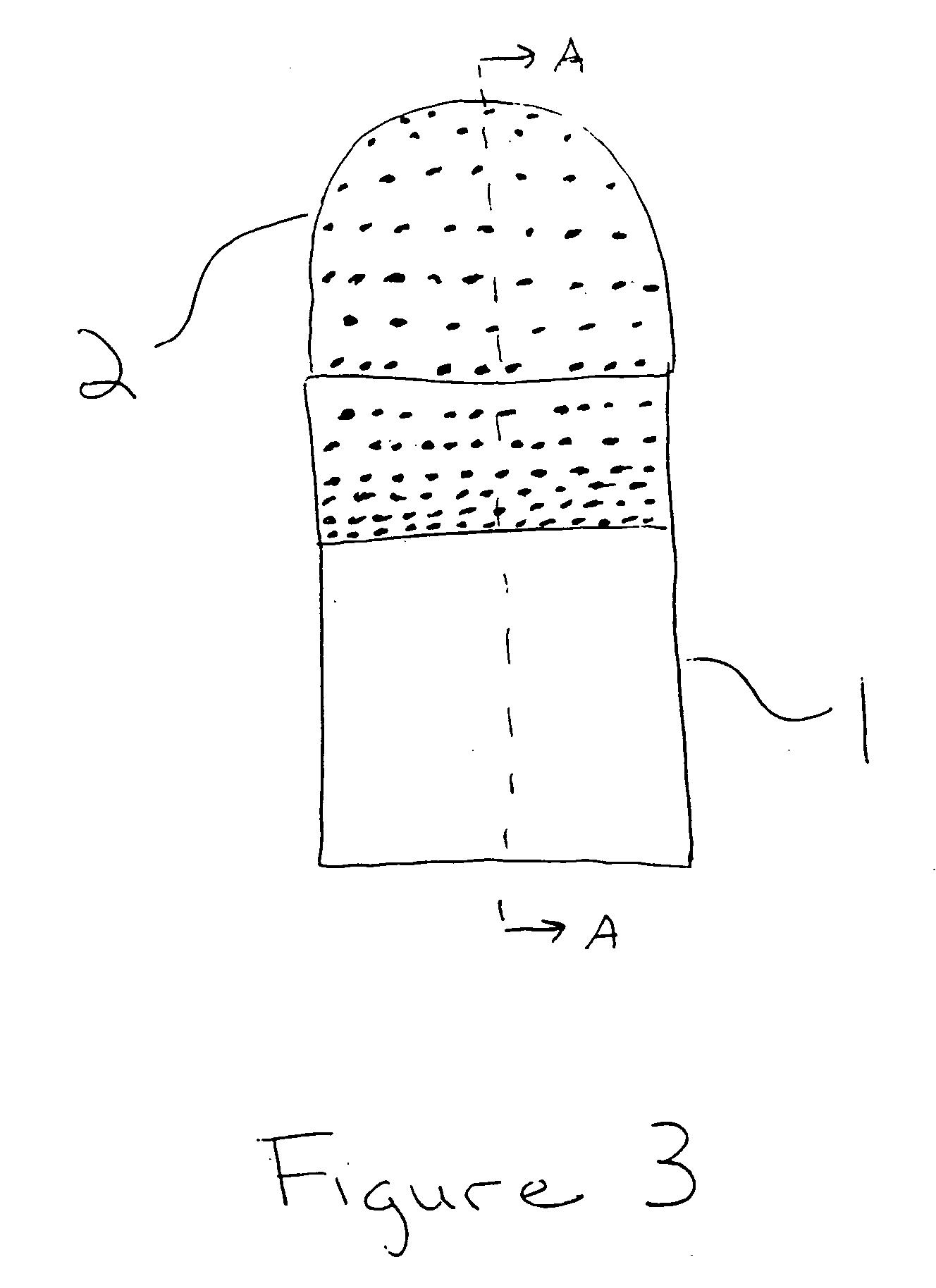Adhesive applicator tip with a polymerization initiator, polymerization rate modifier, and/or bioactive material
a technology of polymerization initiator and polymerization rate modifier, applied in the field of applications, can solve the problems of unattractive wound closure marks, surgical staples impose additional wound trauma, and require the use of ancillary and often expensive devices for positioning and applying staples, and achieve superior material distribution profile, reduce polymerization time of dispensed monomeric adhesive, and improve the effect of adhesive performan
- Summary
- Abstract
- Description
- Claims
- Application Information
AI Technical Summary
Benefits of technology
Problems solved by technology
Method used
Image
Examples
Embodiment Construction
[0048] As mentioned above, commonly assigned U.S. Pat. No. 5,928,611, the disclosure of which is hereby incorporated in its entirety, discloses the use of low boiling point solvents, such as acetone, ethanol, or mixtures thereof, to apply a polymerization or cross-linking initiator or rate modifier to an applicator tip. Cyanoacrylate adhesive compositions applied through such tips can show rapid polymerization, with concomitant production of heat. If the compositions are applied to living tissues, this might, in some instances, cause damage to the tissues and necrosis of underlying and / or adjacent living matter. Analysis of the tips produced by the methods of this patent shows that the use of acetone to apply the initiator or rate modifier to the tip results in distribution of the material primarily on the outside, or near the exterior surface, of the tip as well as at the proximal, or bottom, portion. Such a distribution is shown in FIG. 3.
[0049] To improve the polymerization char...
PUM
| Property | Measurement | Unit |
|---|---|---|
| Pore size | aaaaa | aaaaa |
| Pore size | aaaaa | aaaaa |
| Pressure | aaaaa | aaaaa |
Abstract
Description
Claims
Application Information
 Login to View More
Login to View More - R&D
- Intellectual Property
- Life Sciences
- Materials
- Tech Scout
- Unparalleled Data Quality
- Higher Quality Content
- 60% Fewer Hallucinations
Browse by: Latest US Patents, China's latest patents, Technical Efficacy Thesaurus, Application Domain, Technology Topic, Popular Technical Reports.
© 2025 PatSnap. All rights reserved.Legal|Privacy policy|Modern Slavery Act Transparency Statement|Sitemap|About US| Contact US: help@patsnap.com



